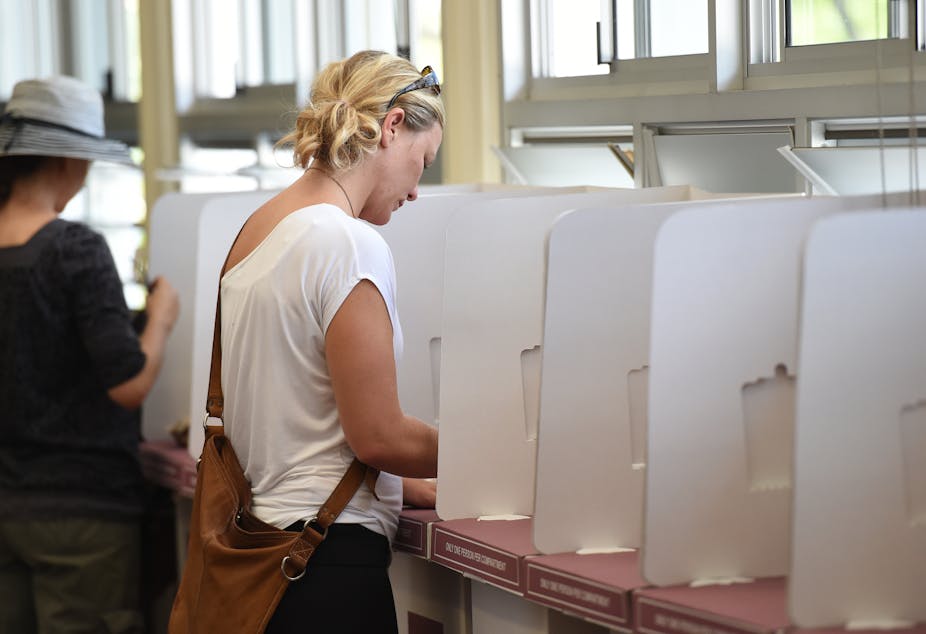Many recent elections have ended with bitter disputes about electoral integrity. The issue is perhaps best exemplified by partisan divisions in the United States over Republican allegations of voter fraud and Democratic claims of voter suppression.
However, this disease has become contagious in other Anglo-American democracies. It has generated controversies about the Fair Elections Act in Canada and lost ballot boxes in Australia. In Britain, questions have arisen over insecure postal ballots, proxy voting and fraudulent practices.
The 2015 UK general election will provide a further test case following warnings by the Electoral Commission of “ethnic kinship” voting in British Pakistani and Bangladeshi communities. This is a practice thought to make these areas particularly vulnerable to electoral fraud. Reforms to processes of electoral administration are also under debate in Ireland.
The consequences of voting irregularities are even more serious elsewhere in the world. Contentious elections have sparked massive street protests in Cambodia, a military coup d’état in Thailand, bloody violence in 2007 in Kenya and the 2004 Orange Revolution in Ukraine.
The recent six-week postponement of Nigeria’s presidential election, amid delays in distributing voter ID cards, has also raised widespread concern.
But how do we know when complaints about electoral malpractices reflect genuine flaws and failures, and when they are false claims stoked by sore losers?
The expert survey
The Electoral Integrity Project, based at Harvard and Sydney universities, has just released a report and dataset for The Year in Elections 2014.
Expert assessments evaluate the state of the world’s elections each year. The third release of the Perceptions of Electoral Integrity (PEI) dataset covers 127 national parliamentary and presidential contests held from July 1, 2012, to December 31, 2014, in 107 countries.
Evidence is gathered from a global survey of 1429 domestic and international election experts (with a response rate of 29%). Immediately after each contest, the quality of each election is evaluated based on 49 indicators. Responses are clustered into 11 stages throughout the electoral cycle and then summarised to construct an overall 100-point expert PEI index and ranking.
The world map of electoral integrity below identifies the best and worst elections around the globe in this period.

Failed elections
During 2014, the five worst elections worldwide were in Egypt, Mozambique, Afghanistan, Bahrain and Syria. All failed to meet international standards.
For example, in the second round of the Afghanistan presidential election in April, a bitter dispute about alleged fraud “on an industrial scale” – resolved only by an eventual UN/US-brokered power-sharing arrangement – undermined confidence in the process and outcome.
In Syria, the presidential election in June was attempted in the midst of a bloody civil war and deep humanitarian crisis. Polling did not take place in rebel areas where an estimated nine million Syrians have fled their homes.
Contests meeting international standards
By contrast, during 2014, the five best elections were in Lithuania (ranked first), Costa Rica, Sweden, Slovenia and Uruguay.
But compared with 127 contests covered in PEI-3 since 2012, it is striking that the 2012 presidential election (ranked 42nd) and the 2014 Congressional elections (ranked 48th) in the US scored lowest among all Western democracies.
Experts expressed concern about US electoral laws and voter registration procedures. These are areas of heated partisan debate. There are also concerns over partisan gerrymandering of district boundaries and the deregulation of campaign finance.
As a result, the US midterm contests in 2014 were ranked as similar in quality to elections in Colombia and Bulgaria.
What drives electoral integrity?
Electoral integrity is generally strengthened by three factors: democracy, development and power‐sharing constitutions. Longer experience over successive contests usually consolidates democratic practices, deepens civic cultures and builds the capacity of professional electoral management bodies.
Economic development provides the resources and technical capacity for professional electoral administration. Power‐sharing institutions, such as a free press and independent parliaments, serve as watchdogs curbing malpractices.
Systematic cross-national research has established these general patterns. However, several important exceptions can still be observed.
States in Africa and the Middle East usually face the greatest risks of failed elections, as shown by Mauritania, Iraq, Egypt and Bahrain. But there are clear exceptions within these regions. Notable successes were the Tunisian presidential and legislative elections and fairly well‐rated contests in South Africa.
The most serious risks usually arise during the electoral cycle from disparities in political finance and media coverage during the campaign. Experts assess problems at these stages as far more widespread than malpractices occurring on election day or in its aftermath, such as ballot stuffing or fraud.
Problems during the electoral cycle


